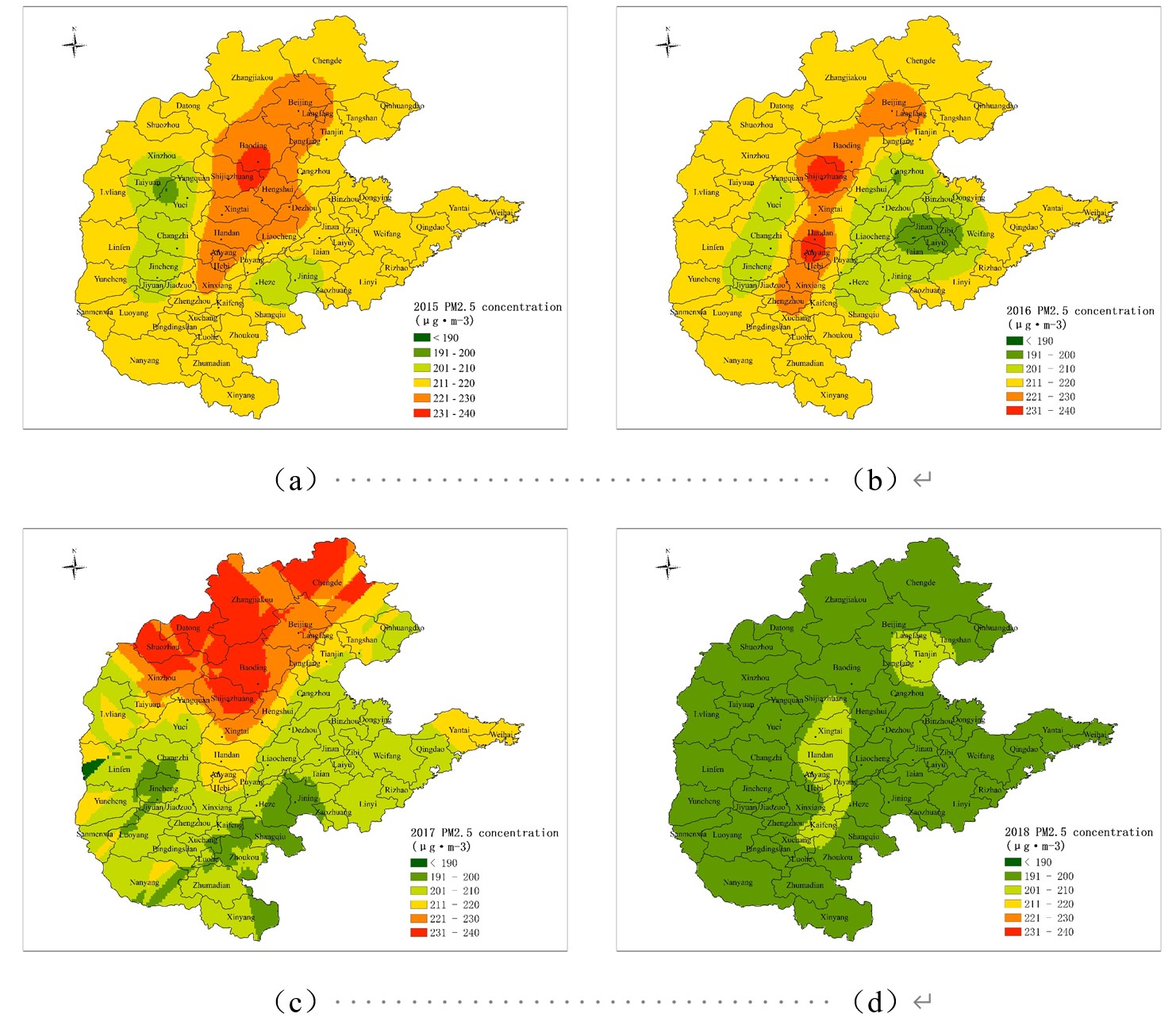
Beijing-Tianjin-Hebei and the surrounding area (BTHS) experiences the most serious PM2.5 pollution in China. To investigate PM2.5 pollution characteristics in regional heavy air pollution, forty-three events in BTHS during 2015–2018 were selected in this study. These regional events generally lasted five days and covered nineteen cities, with an average PM2.5 concentration of 204 μg·m-3 and a maximum daily average concentration of 358 μg·m-3. The pollution events occurred mainly during October to March of the following year, which is the heating season in this region. The occurrence of pollution events and the PM2.5 concentration displayed a decreasing trend during 2015–2018. Of the forty-three events, thirteen started in Baoding city, and the peak PM2.5 concentration was recorded in Baoding city eleven times, indicating that it was the most polluted city in BTHS. A comprehensive classification method determined that southwest channel pollution was the main type of pollution event in BTHS. It occurred nine, seven, four, and eight times in 2015–2018, accounting for 56.3%, 53.8% 80.0%, and 88.9% of all pollution events, respectively. A typical regional heavy PM2.5 pollution event occurred in March 2016. The analysis revealed that it was initiated by pollutant transport from regions south of BTHS. Local pollutant emissions and regional pollutants accumulated, and secondary pollutant formation occurred in association with weak winds and a high relative humidity, which maintained the heavy pollution levels. Relative humidity had the most significant influence on the two most important stages of a heavy PM2.5 pollution event, which were the initial and high concentration stages, respectively.
Total file downloads: 4